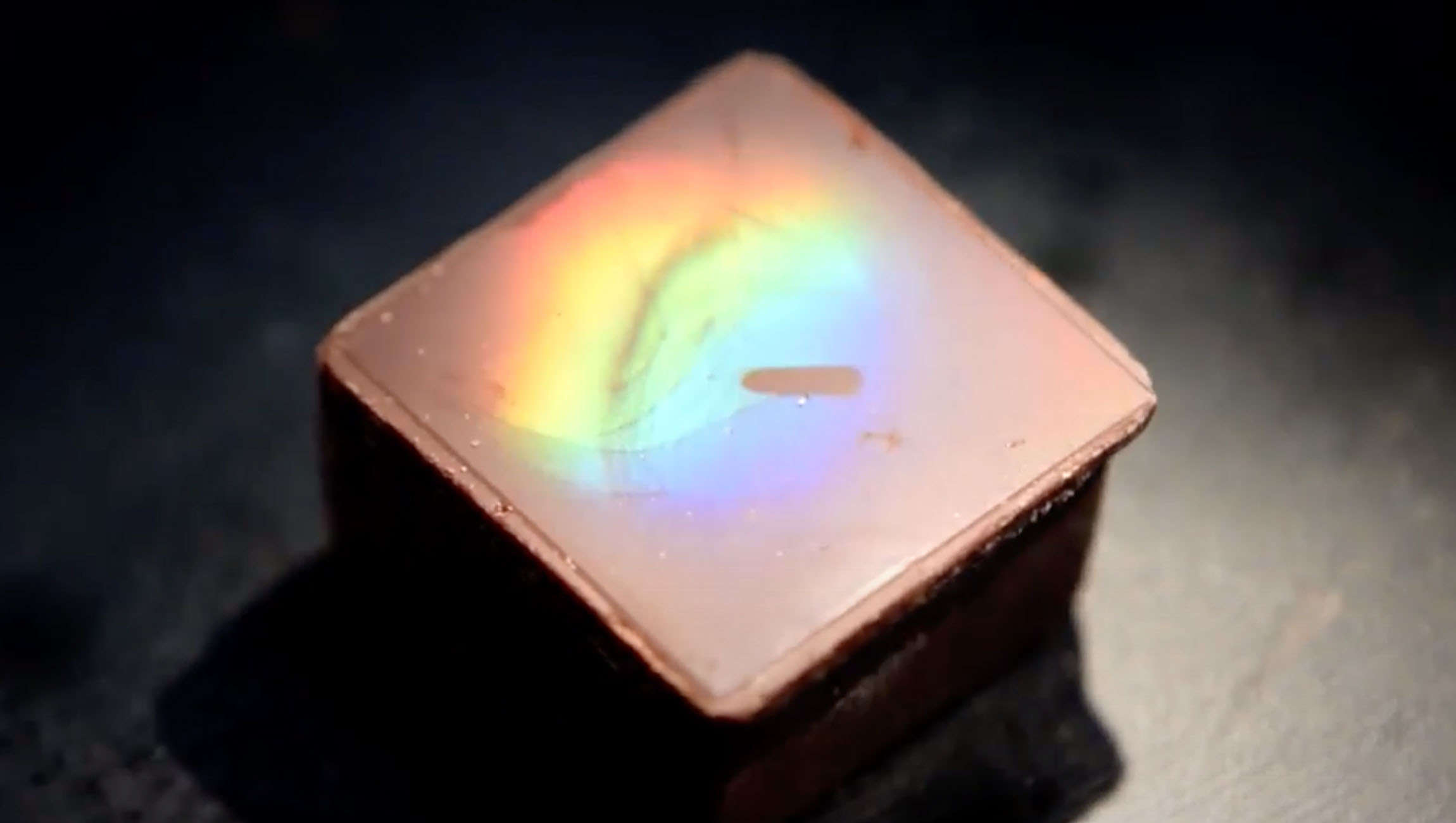Create a free profile to get unlimited access to exclusive videos, sweepstakes, and more!
Willy Wonka eat your heart out, because holographic rainbow chocolate now exists

Out of all the things that came out of the Wonka factory, this beats even Fizzy Lifters and Everlasting Gobstoppers.
Chocolate with a holographic effect is now a thing. An interdisciplinary team of scientists from ETH Zurich and FNHW University in Switzerland have now developed a new method that requires absolutely no dyes or additives whatsoever. So the effect isn’t really a hologram — more like rainbow iridescence. Even Wonka would wonder how you can do that without pigment, but the inspiration comes from substances and creatures whose structural coloring manipulates light to reflect a certain color (or colors). Think everything from opals to cephalopods to butterflies.
Holographic effects are typically created by laser-printing holograms onto a flat, metallic surface (like aluminum), except you can’t exactly eat things like holographic stickers. The ETH/FNHW team has taken it one step further by creating a specialized mold that changes the structure of chocolate on the surface. Iridescence is actually a sort of optical magic. Structural iridescence, does what pigments, which absorb some wavelengths of light and reflect others, could only dream of. Structures with an iridescent effect cause interference. This is a phenomenon in which light waves crash into each other, brightening the color from some angles and changing it from others. This is why you see different colors as your point of view shifts.
There are many ways interference is achieved in nature. The blue morpho butterfly gets its brilliant jewel tones from layers of scale-like nanostructures in its wings that reflect a narrow wavelength of blue light. Organisms have evolved iridescence to confuse predators or impress mates. Cephalopods like octopi and cuttlefish can blend into almost anything with structural coloring. Their chromatophores can only reflect certain colors, so they get their iridescence from iridophores, which are stacked cells that reflect light back at different wavelengths, and leucophores, which use proteins known as reflectins to scatter light. Prowling sharks are unlikely to distinguish between a shiny squid and sunlight streaming in from above.
Coming up with holographic chocolate took much experimentation with structure. Patrick Rühs, a food scientist, Etienne Jeoffroy, a materials scientist, and physicist Henning Galinski figured out the properties of chocolate before testing out edible gold and titanium oxide coatings. They were onto structural colors here, because they did try changing up the thickness of these coatings to reflect different colors. The problem is that pouring ultrahot molten metal (even if it is edible) over chocolate, which can melt right in your hand, is beyond frustrating. That was when materials science student Anita Zingg helped the team develop a special mold that made an impression on the chocolate that allowed it to structurally manipulate light. Refining the mold gave produced an even stronger iridescence.
So when will everyone else get a taste of this chocolate without a Golden Ticket? The team is modifying the mold for commercial production and meeting with chocolate producers, so you might feel like you’re vising the Wonka factory sooner than you think.


























